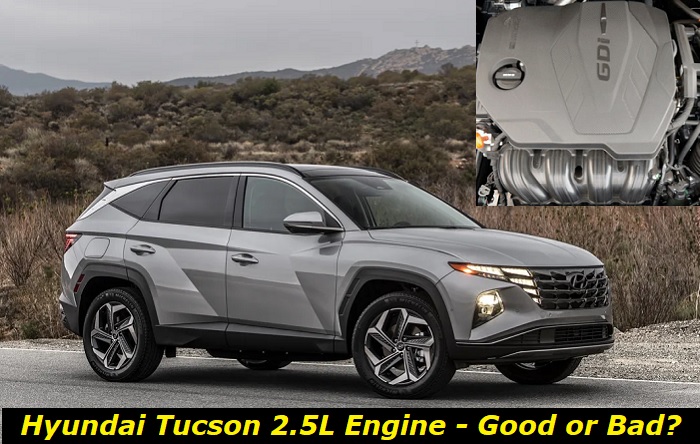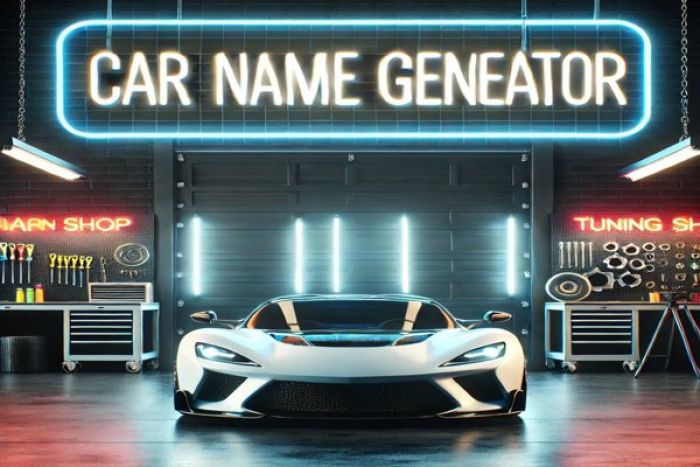The Hyundai Tucson has always been a conservative pick in the small SUV segment of the market, doing most things correctly but not attempting to really elevate itself from the competition. The auto got a complete redesign as it entered its fourth generation of production in 2020. However, it retained its spacious interior with comfortable seats, which has been its major selling point over the years.
Amid its promising features, there have been problems with its engine that troubled a lot of its users. In this article, we will discover the reasons for the flak that the 2022 Tucson has been getting as well as the solutions that can be applied to fix them.

Key facts and my opinion about the engine
- Production years: 2019-now
- Average lifespan of G4KN: 180,000-200,000 miles
- Fuel supply type: combined injection (GDI+MPI)
- Power range: 194 hp
- Fuel efficiency: above average
- Engine block material: aluminum
- Engine reliability score: medium
- The most common problems: catalytic converter destroying the cylinders, unknown lifespan of the thermostat, lifters require only good oil.
2022 Hyundai Tucson 2.5L Engine Longevity
The 2.5L engine (G4KN) used by the new Tucson is also referred to as the Hyundai Smartstream engine. It entered into production in 2018, and it's known for its variety of applications in the Hyundai and Kia brands.
Since the Hyundai 2.5L engine was only produced in 2018, there's no definitive answer yet about the question of its longevity. Judging from the ones that preceded the unit, it may last from 150,000 miles to 250,000 miles at its best. The numbers factor in safe driving habits and regular maintenance.
However, it's worth noting that some of the current electrical and transmission problems plaguing the 2022 Hyundai Tucson can have a detrimental effect on the engine itself. Therefore, the numbers could be cut back significantly from here. At its worst, there have been overheating issues with the Tucson as early as its first 10,000 miles.
Common Problems Found in the 2022 Hyundai Tucson 2.5L Engine
The 2022 model year of the Hyundai Tucson is definitely off to a bad start. Barely a year after its release, complaints about it are already piling up. These don't look well for the unit in the years to come.
Right off the bat, the most common problems hounding 2022 Tucson owners with the 2.5L engine are the following:
1. Overheating
There are a lot of angles to be considered when looking for the cause of the overheating problems that randomly occur in the 2022 Hyundai Tucson. These can range from electrical components or mechanical parts affecting the engine, or within the engine itself. The most common cause of these is a failure in the cooling system.
The first thing to do if you notice overheating in your engine is to check the coolant level. If it's low, add more and see if that solves the problem. If it doesn't, then there may be a leak in the system somewhere. Check all hoses and connections for leaks, and if you find any, replace the faulty parts where they are coming from.
If the coolant level is fine and there are no leaks, then the next step is to check the radiator. Make sure there is enough air flowing through it, and that the radiator fins are not obstructed and are free from any carbon deposits. If there are any signs of these, have them cleaned.
See to it that the fan is working as it should, too. Check the wirings and the motor if they are still operating properly. Fix the wiring or replace the fan assembly if needed.
The next step is to check the water pump if no problem is found in the radiator and the fan. The water pump circulates coolant through the engine, so if it's not working right, the engine will overheat. Replace that part if it's no longer functioning well.
After that, check the thermostat. The thermostat controls the flow of coolant through the engine, and if it's not working properly, the engine will be forced to operate under extreme temperatures. Replace it as needed.
Proceed by inspecting the head gasket if the cause of the issue is not within the thermostat. The head gasket seals the engine block and cylinder heads, and if it fails, coolant can enter the cylinders and cause the engine temperature to rise up dramatically. Replace the said part if necessary.
Last but not the least, try to detect any blockages in the exhaust system. The exhaust gases need to flow freely out of the engine, and if there's any obstruction, it can cause the engine to overheat. Have the system checked and repaired as needed.
There are many factors that can cause overheating problems in the 2022 Hyundai Tucson engine. The ones mentioned here are just a few of them but are the most common in its 2.5L power unit. If you notice any of these issues, have your auto checked by a professional as soon as possible to prevent further damage to the engine or even starting a fire in your vehicle.
2. Oil Leaks
As stated earlier, one of the most common reasons for the overheating problem in the 2022 Hyundai Tucson is a leaking coolant. One more thing that you should pay special attention to when it comes to its 2.5L engine is an oil leak. This is the main culprit for its lubrication issues which can cause many of its parts to fail.
When it comes to diagnosing oil leaks, it is important to first check the level and condition of the oil. If the oil level is constantly going low even if you just topped it up, then there's likely an oil leak somewhere in the engine. You can also tell an oil leak if the color of the fluid changes from its usual amber color to a darker shade. This usually happens when there are contaminants in the oil which can come from either an external source or from within the engine itself.
If you suspect that there is an oil leak in your Tucson, then the best thing to do is to take it to a mechanic and have it checked. The mechanic will usually be able to tell you exactly where the leak is coming from and what needs to be done in order to fix it. In most cases, the mechanic will recommend that you replace the gasket or the oil pan itself.
If the oil leak is coming from somewhere within the engine, then there are a few things that you can do to fix it. One of the first things that you should do is assess all of the hoses and connections that lead into and out of the engine. If any of these are loose, then it is very likely that they are the source of the problem. Moreover, observe the quality of the oil filter. If the filter is clogged, then it is very likely the source of the problem.
3. Engine Stalling and Acceleration Issues
One more major headache associated with the 2022 Hyundai Tucson is the high tendency of its G4KN engine to stall or suffer from acceleration issues. This may stem from the problems listed earlier or somewhere else.
A good place to start though is in the transmission oil pump. Based on the recall notice of Hyundai in October 2022, a malfunction in this component can impair the operation of the vehicle's "fail-safe" limited-mobility drive mode, which can lead to a complete loss of power in the vehicle.
Among the affected models of the recent recall are the 2021 to 2022 model-year Elantra, Kona, Santa Cruz, Santa Fe, Sonata, and Veloster. Although Tucson is not specifically included in the list, it should not be ruled out of this certain problem.
Better watch out for the other common symptoms of transmission oil pump failure such as the sudden illumination of the check engine light, hard shifts, and a burning smell. If you experience any of these, have your Tucson checked by a professional mechanic right away.
Another thing that can cause stalling and acceleration issues on the Tucson is a dirty air filter. Hyundai recommends that this component should be replaced every 12 months or 12,000 miles, whichever comes first. A clogged air filter will restrict the amount of air getting into the engine, which in turn bog it. Replacing a dirty air filter is easy and inexpensive, so there's no excuse for not doing it.
If you've done all of the above and the problem persists, then it's time to bring your Tucson to the nearest Hyundai dealer for further diagnosis. There might be a need to replace some parts, so be prepared for that eventuality.
Stalling and acceleration issues can be signs of bigger problems down the road. So, don't delay in seeking professional help.
2022 Hyundai Tucson 2.5L Engine Specs
The new Hyundai Tucson has enough torque and power to provide a convenient mode of transport for drivers and passengers alike. Its gasoline-fed 2.5-liter inline-four engine features a direct overhead cam (DOHC) with a 16-valve configuration and direct injection system.
The unit has a high compression ratio of 13.0:1 and the design of the engine allows it to produce up to 187 hp and 178 lb-ft of torque. Its fuel efficiency is also a plus with ratings of 26 mpg in city drives and 33 mpg on the highway.
Conclusion
The specs of the 2022 Hyundai Tucson with the 2.5L engine surely look great on paper. It promises decent power and fuel economy above all. However, it's marred with a lot of issues, and these are things that you should definitely keep a watch on if you own the vehicle.
About the authors
The CarAraC research team is composed of seasoned auto mechanics and automotive industry professionals, including individuals with advanced degrees and certifications in their field. Our team members boast prestigious credentials, reflecting their extensive knowledge and skills. These qualifications include: IMI: Institute of the Motor Industry, ASE-Certified Master Automobile Technicians; Coventry University, Graduate of MA in Automotive Journalism; Politecnico di Torino, Italy, MS Automotive Engineering; Ss. Cyril and Methodius University in Skopje, Mechanical University in Skopje; TOC Automotive College; DHA Suffa University, Department of Mechanical Engineering






Add comment